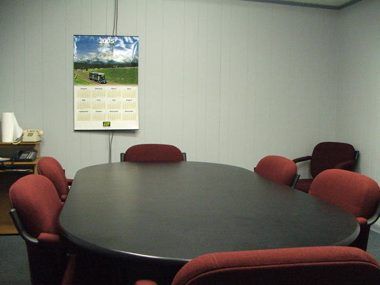A badly done evaluation can cause the following undesirable outcomes:
the person quits, leaves, walks out or throws coffee in your face. the review becomes an demotivator for future presentations. a friend becomes an enemy. An evaluation reflects on the evaluator as much as it does the person who is receiving it.
A good or great evaluation should do the following:
inspire the person receiving it to new heights. give the recipient specific information that can be used constructively. encourage the person to seek additional input and evaluation. maintain the person’s respect and build your relationship based on trust.
The “sandwich technique” is a simple strategy widely used in Toastmasters International, the world’s leading organization dedicated to helping people improve their communication and leadership skills. It can be used to give a killer evaluation that will leave the recipient in a positive state. The technique simply involves starting the evaluation by mentioning some positive aspects, followed by a couple of specific suggestions for improvement and ending with some positive comments. Better yet, end it with an positive overall impression. For example, “Betty, you had a great smile and engaged the audience well. People connected with you. I noticed though that you were taking too much time going into the discussion about product features, rather then the benefits they would be getting. But they got a lot from the customer examples you gave and the presentation didn’t get bogged down and run too long. Your passion came through great. Good luck on the closing session tomorrow.” As an evaluator, here are some tips that work well with evaluations:
Know the objectives of the performance, whether it is a speech, sales presentation or job review. Don’t be a critic. This isn’t a movie. This is part of a process of building up team members. Nor is it about passing or failing – leave that in school. Act like a coach, not like a judge. It is not about you, it is about the person receiving the feedback. Sometimes, especially when evaluations are not done one on one, the evaluator can lose sight of the presenter and take tangents. Going off on an inspirational, preachy rant is not going to be as helpful as giving the presenter or team member specific constructive feedback. Keep it simple. Figure out which areas to emphasize and which to leave out. The guts of the most evaluations can be broken into three areas: a) content, b) organization, c) delivery. For an after dinner speech, during drinks, content usually doesn’t matter since people just want to be entertained. Not true for a technical presentation. Organization becomes critical where time constraints are tight. Prioritize and comment only on a couple main points. Like the farmer who has a truckload of feed for when the cows come home at night. If only one shows up, don’t give her the whole load! Create a simple evaluation form. A blank sheet of paper works well in a pinch. A single sheet of notes broken into parts with the top third being some positive specific comments, the middle third being one or two specific suggestions for improvement and the bottom third for overall positive impression and maybe a closing comment. This can help focus the discussion and also can be something the person can take away from the review for later consideration. It does not need to be like those multi-point checkbox things they use for government inspections. Do not give a “whitewash” evaluation. Avoiding candor hurts more than it helps. Being honest and direct adds value. If the presentation is a bomb or if you are going to fire the person, it does not help either party to give a falsely positive evaluation. There can still be positive aspects but if the overall outcome was below par, don’t hide that fact. Practice, practice, practice. If you need a forum, an easy one is one of the local Toastmasters clubs. There are also courses available. An killer evaluation should not take a long time. Three to five minutes is enough for an evaluation of a stage performance and should be given as soon as possible after the performance ends. It should not come after things have been forgotten. For a sales presentation, it often becomes a little more involved depending on the particular circumstances. It can be done in a quick 5 to 10 minute session, or over a long lunch if the sale did not close after months of work on it. Job performance reviews should be done in a pre-determined amount of time that you stick with whether it be 15 minutes, an hour or whatever. The evaluation component should be a certain pre-determined percentage of if it. The remainder used for setting performance targets, etc.
If you are not sure how well you are doing in your evaluations, get an evaluator to evaluate your evaluation. Then ask yourself, would you want to go through that again? If you are consistently receiving bad evaluations from someone, print out this article, highlight the relevant portions and send it to the offender with a polite indication you are giving feedback because you care about the process. We would love to receive an evaluation on our evaluation article! Please post comments and share your experiences giving and receiving evaluations (the good, the bad and the ugly). Peter Paul Roosen and Tatsuya Nakagawa are co-founders of Atomica Creative Group, a specialized strategic product marketing firm. Through leading edge insight and research, sound strategic planning and effective project management, Atomica helps companies achieve greater success in bringing new products to market and in improving their existing businesses. They have co-authored Overcoming Inventoritis: Happy About® Not flushing Away Your Innovation Dollars now available.
